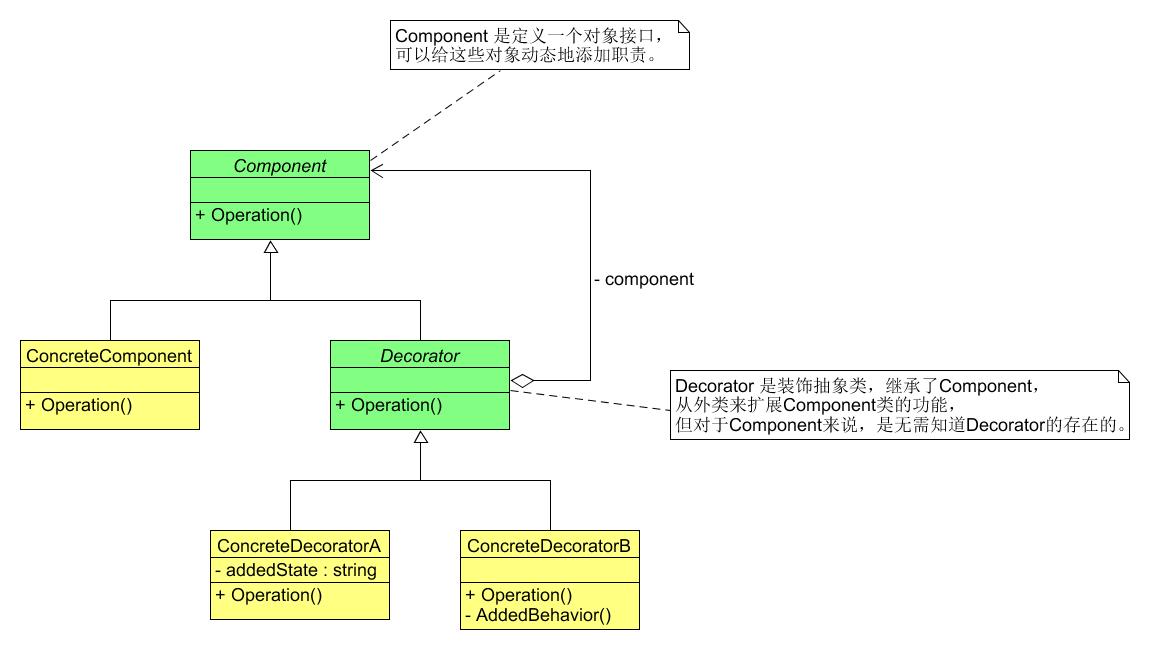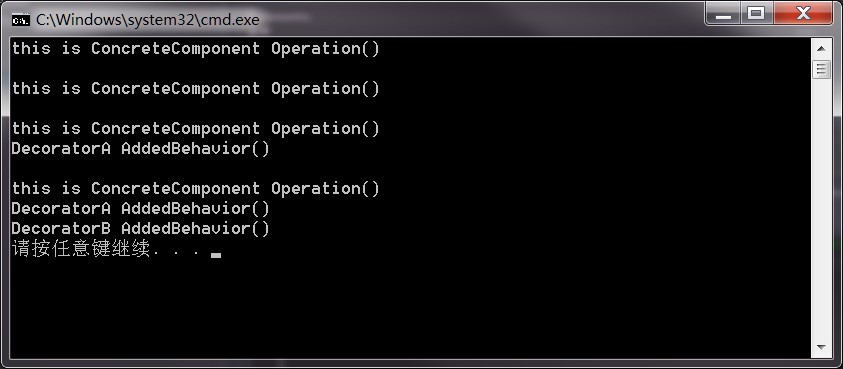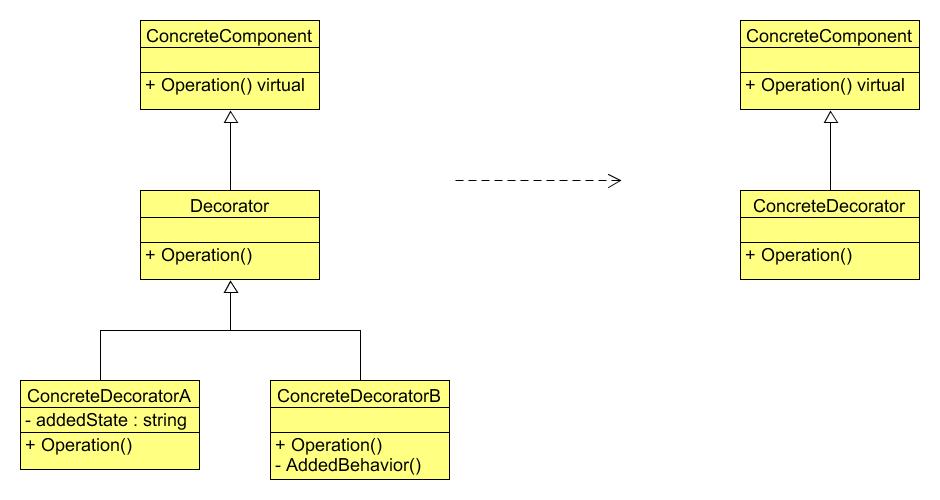1. 装饰模式
装饰模式(Decorator),动态的给一个对象添加一些额外的职责,就增加功能来说,装饰模式比生成子类更为灵活。[DP]

Component 是定义一个对象接口,可以给这些对象动态地添加职责。ConcreteComponent 是一个具体的对象,也可以给这个对象添加一些职责。
Decorator,装饰抽象类,继承了Component,从外类来扩展Component类的功能,但对于Component来说,无需知道Decorator的存在的。ConcreteDecorator就是具体的装饰对象,起到给Component添加职责的功能。
可参考:
装饰器模式(Decorator)——深入理解与实战应用
2. 装饰模式示例
#include <iostream>
#include <string>
#include <memory>
using namespace std;
class Component
{
public:
Component() = default;
virtual void Operation()=0; // 如果是抽象基类,此处 =0 必须写,否则会编译出错。
};
class ConcreteComponent:public Component
{
public:
ConcreteComponent() :Component(){}
void Operation(){
cout << "this is ConcreteComponent Operation()" << endl;
}
};
class Decorator:public Component
{
public:
void SetComponent(const shared_ptr<Component> &pComponent){
m_pComponent = pComponent;
}
void Operation()override{
m_pComponent->Operation();
}
private:
shared_ptr<Component> m_pComponent;
};
class DecoratorA :public Decorator
{
public:
void Operation()override{
Decorator::Operation();
AddedBehavior();
}
private:
void AddedBehavior(){
cout << "DecoratorA AddedBehavior()" << endl;
}
};
class DecoratorB :public Decorator
{
public:
void Operation()override{
Decorator::Operation();
AddedBehavior();
}
private:
void AddedBehavior(){
cout << "DecoratorB AddedBehavior()" << endl;
}
};
int main()
{
shared_ptr<Component> pComponent(new ConcreteComponent());
pComponent->Operation();
cout << endl;
shared_ptr<Decorator> pDec(new Decorator());
pDec->SetComponent(pComponent);
pDec->Operation();
cout << endl;
shared_ptr<DecoratorA> pDecA(new DecoratorA());
pDecA->SetComponent(pDec);
pDecA->Operation();
cout << endl;
shared_ptr<DecoratorB> pDecB(new DecoratorB());
pDecB->SetComponent(pDecA);
pDecB->Operation();
}
输出结果:

装饰模式是利用SetComponent来对对象进行包装的。这样每个装饰对象的实现就和如何使用这个对象分离开了,每个装饰对象只关心自己的功能,不需要关系如何被添加到对象链当中。
3. 装饰模式的变体
如果只有一个ConcreteComponent类而没有抽象的Component类,那么Decorator类可以是ConcreteComponent的一个子类。
同样的道理,如果只有一个ConcreteDecorator类,那么就没有必要建立一个单独的Decorator类,而可以把Decorator和ConcreteDecorator的责任合并成一个类。
类图如下:

4. 装饰模式总结
装饰模式是为已有功能动态地添加更多功能的一种方式。
当需要执行特殊行为时,客户代码就可以在运行时根据需要有选择地、按顺序地使用装饰功能包装对象。
好处:
把类中的装饰功能从类中搬移去除,这样可以简化原有的类。
有效的把类的核心职责和装饰功能区分开了,而且可以去除相关类中重复的装饰逻辑。